Prairie Chickens – Part 2
When I was a kid, I saw a picture of a prairie chicken in a magazine, and I was enthralled. It looked otherworldly with it’s bright orange sacs.
I didn’t know anything about the prairie chickens then, and never dreamed I would someday witness them in person.
The Greater Prairie Chicken is not a chicken at all. They are a member of the grouse family. A few quick facts:
- They once ranged over most of the midwest United States from Texas to Minnesota, but are now confined to smaller areas of the upper midwest.
- In the 1930s, they were near extinction, but today their numbers are thought to be about a half million.
- They eat mostly seeds and fruit, but during the summer months they also eat insects and plants.
- During the winter, they “dive” into deep snow to keep warm.
- In early spring, males gather on “booming grounds” or “leks”, usually hills where they will display to attract females. Only 1 or 2 of the most dominant males will do 90% of the mating.
- After mating, the females leave the lek, and go about a mile away to make a nest and lay their eggs. The young are raised by the female alone.
- One of the problems facing the chickens is the non-native introduced Ring-Necked Pheasant which lay their eggs in prairie chicken nests. The eggs hatch sooner than the chickens’ own eggs, and the female chicken thinking her eggs have hatched leads the young pheasants away to raise them. Meanwhile her own eggs are left behind and the young within them die due to lack of incubation.
While all the behavior of the chickens on the lek is fun to watch, the most fascinating is the fighting between the males for dominance. Most of the time these fights are just staring matches, sizing each other up and facing each other down until one backs off and walks away.
But occasionally these staring matches escalate into real fights where they fly up a few feet off the ground striking at each other with their sharp claws and pulling each other’s feathers out with their beaks.
Last year, we watched one of these fights go on for about 15 minutes until both were exhausted and panting.
To the victor go the spoils, in this case, the females.
Isn’t she just the cutest thing? And look at him. He’s pulling out all the stops. “Hey baby, how about me? We could make some beautiful music together.”
By the way, what appear to be horns on the males heads are just long feather groups. They raise them when displaying, and the rest of the time they lie flat against their necks.
Here’s a video I put together showing the birds on the lek. All the sounds you hear are the chickens themselves. They have quite a variety of calls.
.
I hope the Prairie Chicken can hold it’s own so that future generations can witness this spectacle. The prairie would be a much quieter place without them.

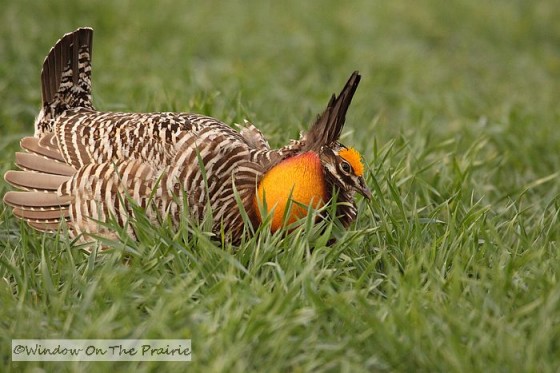
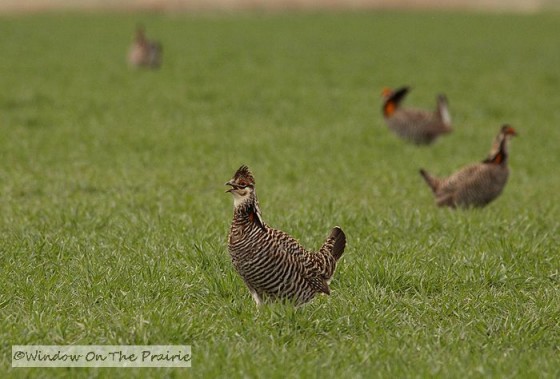
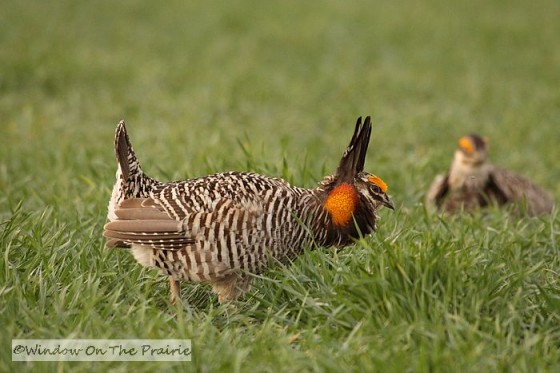
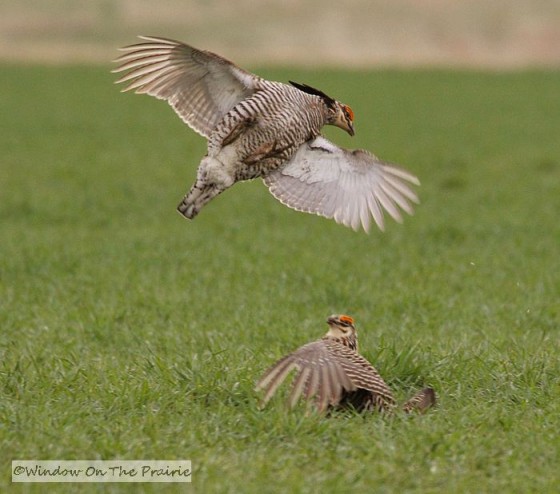
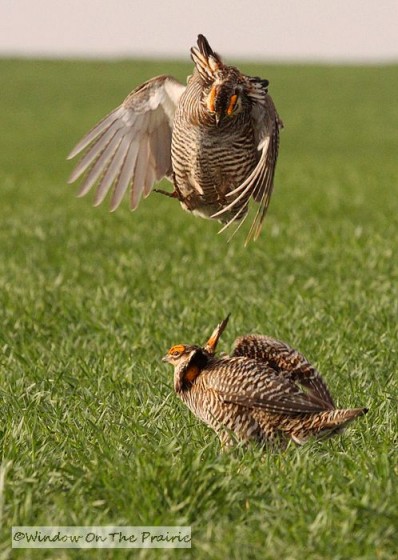
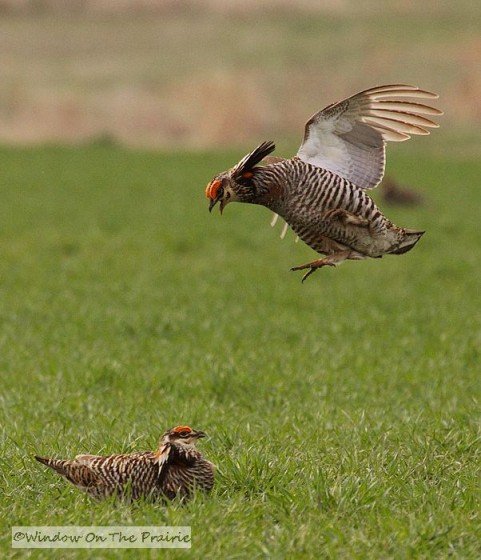
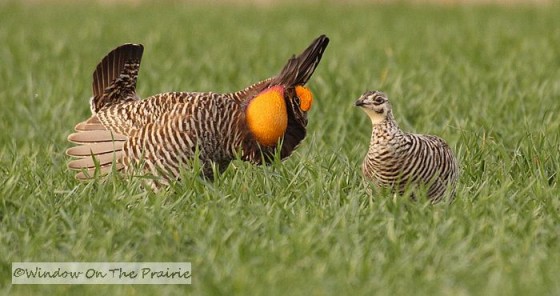
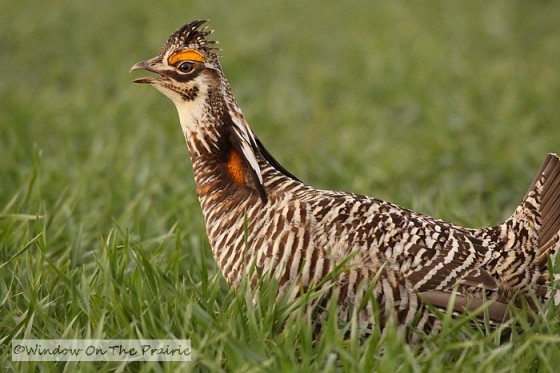

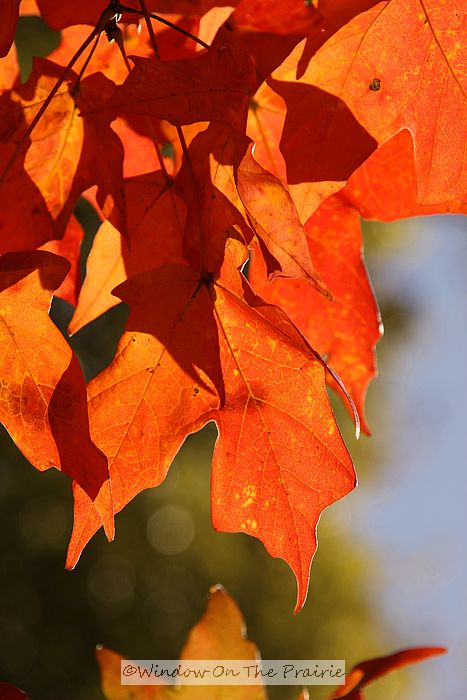
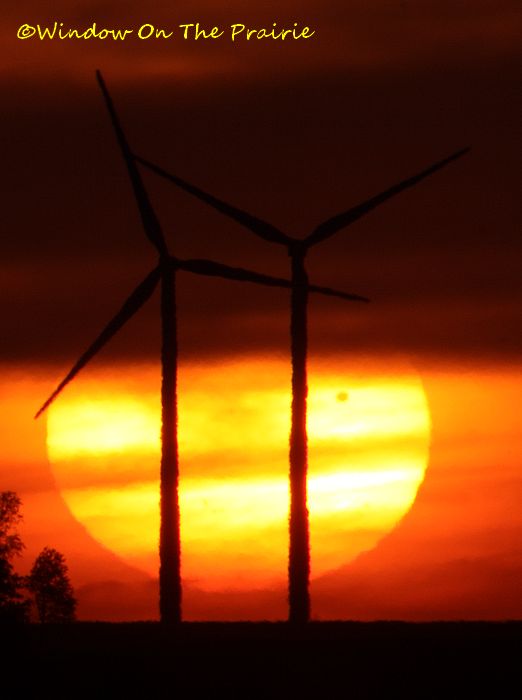
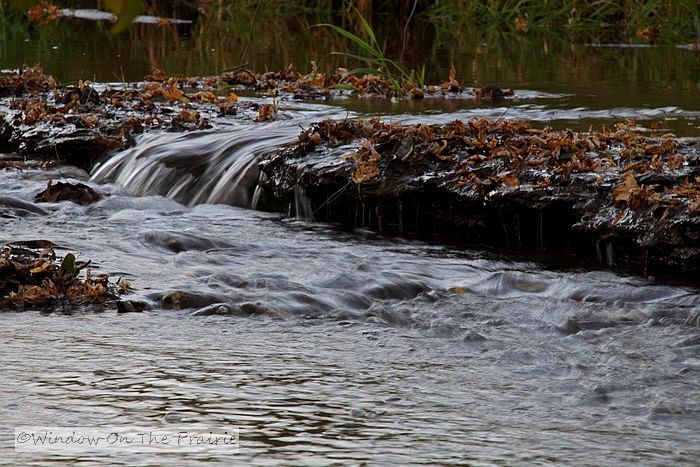
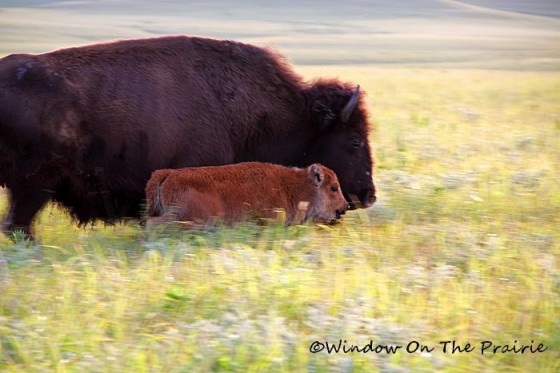
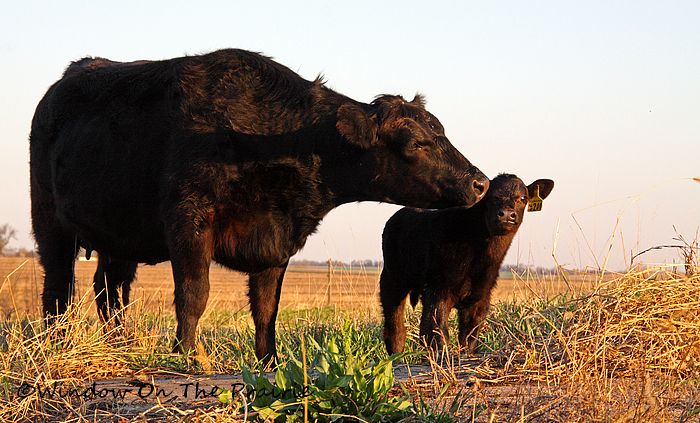

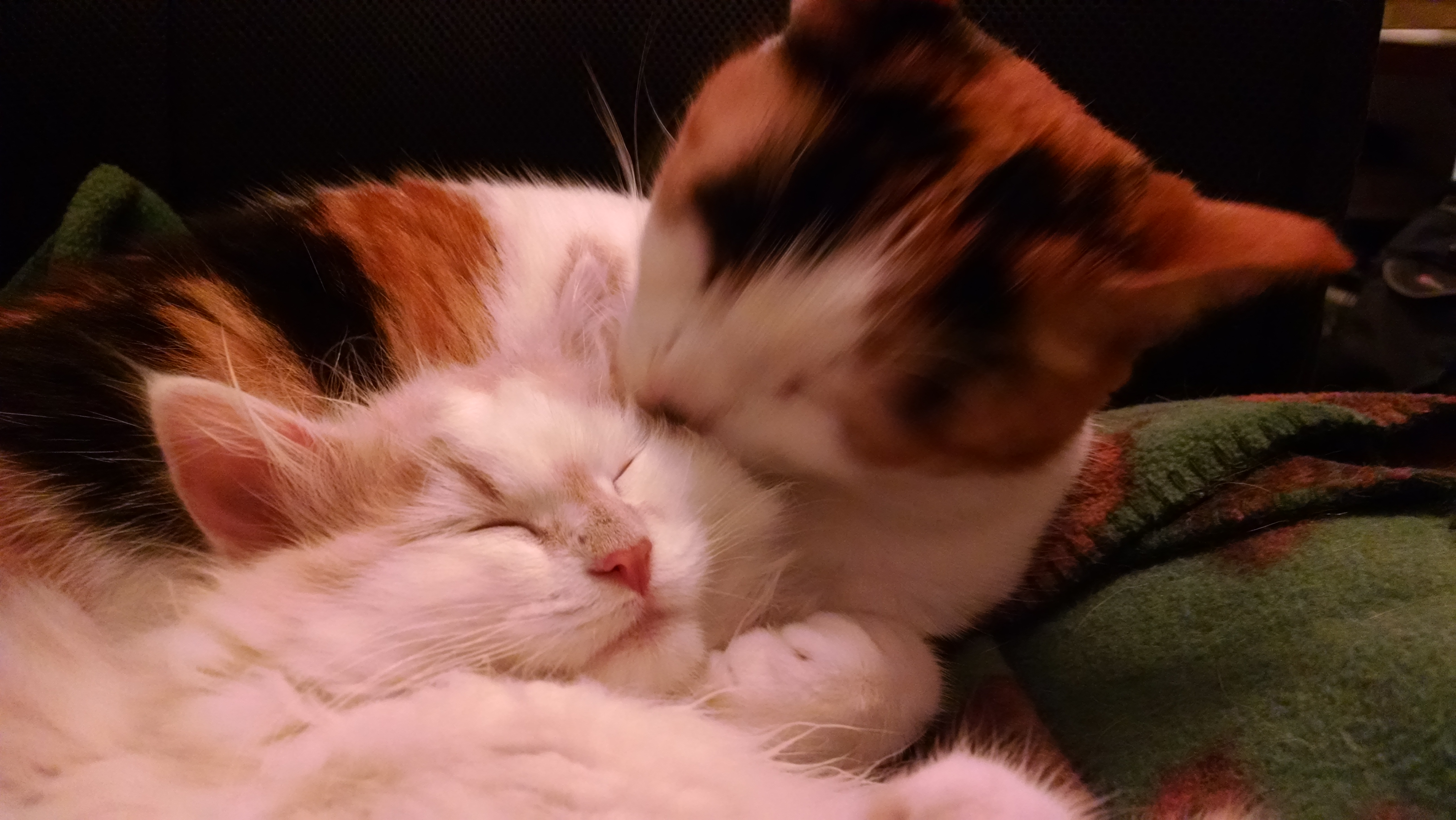
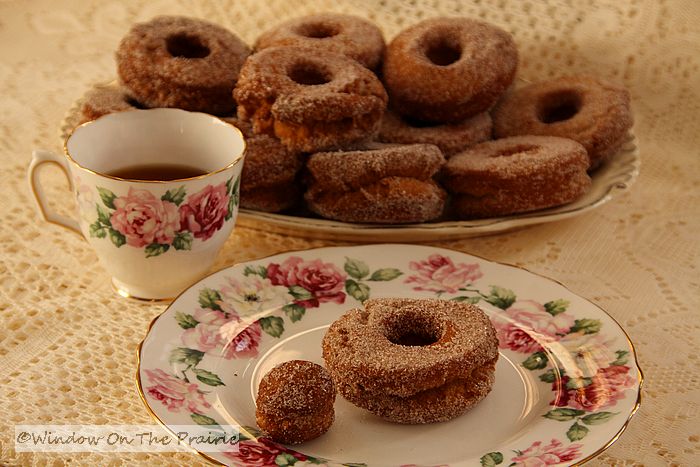
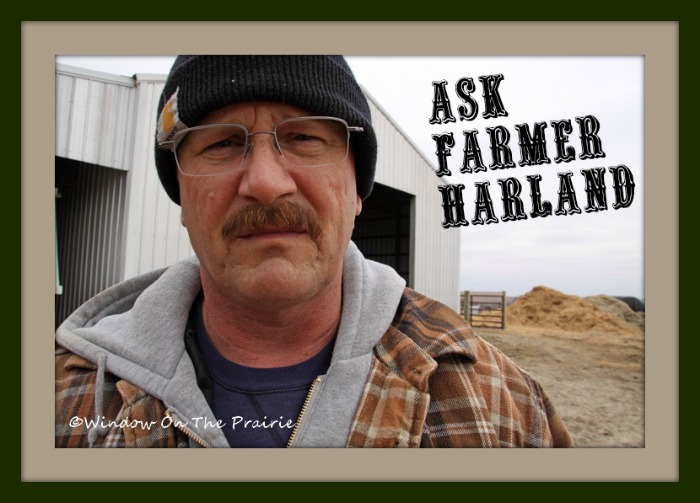



Just thought you’d like to know that our Jack Russell terrier was VERY entertained by your video!
LOL, Melody!
What a sight and the sounds!! Thanks for the video!
Was there not much of a breeze that morning? I didn’t think I saw the grass moving much. Was this a plot of ground that had been burned off earlier? Lot’s of questions.
Thank you Glenda! There was little or no breeze that morning, which is worthy of a post in itself. The green is winter wheat. The landowner has most of his land in CRP, and there are shelterbelts too. His land is very wildlife friendly.
That was great and so much fun to watch. I love the dance the males do with the little mincing steps! I also love all the noise the make. You are very lucky, as a city girl all I hear is traffic and sirens.
Hi Tina,
A big reason I do this blog is for people like you who may never get to see many of the country sights I sometimes take for granted. I’m so pleased that you enjoyed this.
What a fabulous display!!! You lucky girl!!
That was awesome! I loved the video. You did such great job!!! I’m very impressed! I love how they take those quick little stomping steps..that just kills me. Also, when a few of them were all in front of the female..that was priceless! I feel like they are saying “hey, check me out, look at this…look at my orange cheeks, pick me, pick me oooooooh please pick me!” LOL! I’m so glad you shared this footage with us!!
Your pictures are amazing!
I agree: amazing photos! Thanks for sharing – don’t think I’ll ever see one of those in person.
They are very cool.
Ah yes…orange cheeks, feather groups and posturing: the prairie chicken version of a lifted, chromed-out, spankin’ new 4×4 truck with obscene hitch ornaments! ;p
Loved the video! What beautiful birds. And such a social scene goin’ on, who knew?
LOL….never thought of it that way TCG.
Thank you! Very cool!
I loved seeing this. I feed the birds here off the side of my deck and they are such fun to watch. But, this was priceless not something you see at the bird feeder!! They sure know how to strut their stuff -LOL!
I think I’d be a little annoyed if after all of that the female just flies off.
“see you later boys….hee hee”
I agree Hound Doggy. And sometimes the females don’t even pay attention to the males, but get distracted preening their feathers or doing a little eating. Kinda sad for all the effort the males put into their display. But it’s a system that seems to work for them.
This was a real treat, and thru it all I could hear the sweet song of a Meadow Lark, thank you so much.
Hi Janet,
Ah the meadowlark…it’s one of my favorites too.
Hi Suzanne,
I just saw this article on the Kstate webpage…thought you’d be interested!
http://www.k-state.edu/media/newsreleases/apr11/chickens41411.html
Thank you for this article, Jen,
I hope they can learn how to bring the numbers back. I can’t imagine the prairie without them.